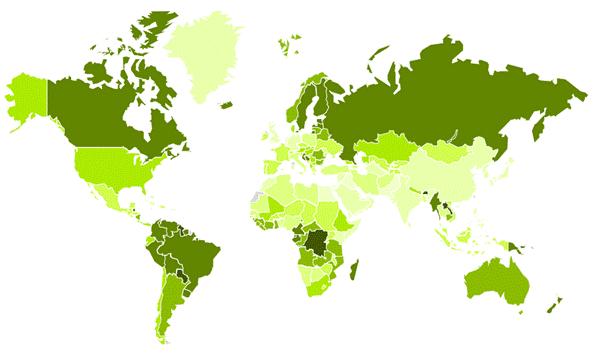
3 minute read
2 NATURAL CAPITAL INDEX
Natural capital is the basis on which a country is built: the physical environment and climatic conditions, combined with the extent of human activities that have or will affect the natural environment. The Natural Capital of a country reflects its ability to sustain the population and the economy, now and into the future.
A nation’s natural capital is a given value – it is as it is – i.e. there are limitations to human ability to improve or change the availability of natural capital. However, continuing exploitation and extension of human activities diminish the existing Natural Capital
Advertisement
N a t u r a l C a p i t a l I n d ex 2 0 2 0 – K e y T a k e-aw a y s
High-ranking countries are characterised by abundant water availability, the source of a rich biodiversity. Many of the highest scoring countries are located in tropical areas. While some of these countries currently may lack social, intellectual and governance capital, their Natural Capital would allow them to develop sustainable competitive economies over time. A certain correlation with the level of human activities and population density can also be observed: large countries with a comparably small population density and rich biodiversity tend to score higher.
The Natural Capital Index 2020 is topped by Laos, followed by Paraguay, Bhutan, and Congo. OECD representation in the top 30 is limited to Sweden, and New Zealand. The two most populated countries, China (155) and India (164) are both affected by a combination of arid climate, high population density and depletion levels, raising concerns over those countries’ ability to self-sustain their large populations in the long term.
The Natural Capital World Map. Dark areas indicate high, light areas low levels of natural capital
N a t u r a l C a p i t a l C om p o n e n t s
The Natural Capital of a country is defined by the natural physical environment. The Natural Capital model incorporates the essence of resources available that allow a country to be completely self-sustaining: land, water, climate, biodiversity, food production and capacity, as well as renewable and nonrenewable energy and mineral resources. In addition, the level of depletion or degradation of those resources that could endanger future self-sufficiency are taken into account to reflect the full picture of the available natural capital.
The number of data points related to natural capital available from a variety of sources is nearly endless. The main challenge is to select the most relevant and meaningful indicators amongst the wealth of available data. In order to define meaningful and relevant, the core issues affecting the sustainable use of natural capital have been defined in the natural capital model below:
N a t u r a l c a p i t a l i n d i c a t o r s

Based on the definition of the key natural capital areas, data series are chosen as indicators that reflect the sustainable competitiveness of a country based on its natural resources (natural capital).
The indicators have been analysed for the latest data point available as well as their development over time, reflecting the current status and the future outlook in relation to the size and population of a country. In addition, indictors that measure the depletion or degradation of the natural resources have been taken into account. The combination of these indicators reflects the current status as well as the ability to sustain the population and the national economy.
As some of the above key areas are difficult to express in numerical values, some quantitative scores compiled by UN agencies have been used for certain indicators, such as biodiversity potential, resource depletion, and the ecological footprint.
For the full list of indicators used, please refer to the methodology section.
Key elements of competitiveness drivers in the Natural Capital Sub-Index
N a t u r a l C a p i t a l I n d ex 2 0 2 0


Governance Performance Index











